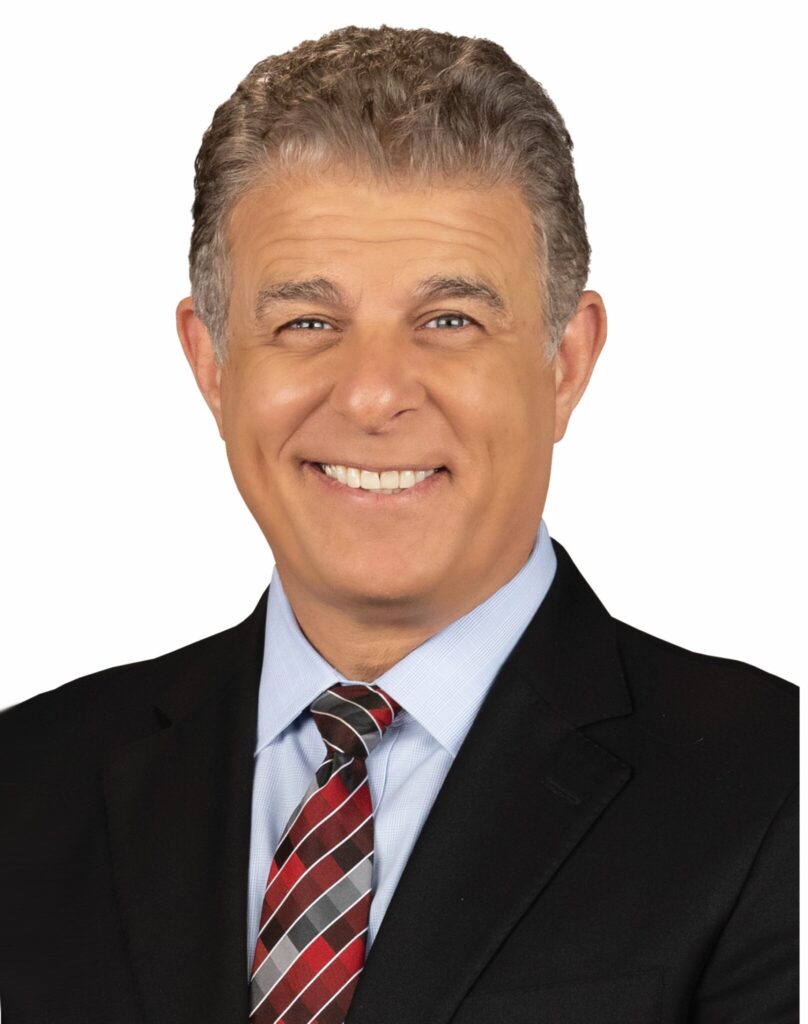 With all of the convention buzz during the NAB Show and IBC that IP received as an alternative to SDI for transport and routing, it’s little wonder SMPTE 2014 would offer a technical deep dive into the underlying technology making IP routing and transport for broadcasters possible. “File-based workflows are another big topic, especially with the addition of IP as a factor as well as new regulations regarding closed captions,” said Sara Kudrle, one of the conference’s chairs. SMPTE image courtesy of Vizrt.
With all of the convention buzz during the NAB Show and IBC that IP received as an alternative to SDI for transport and routing, it’s little wonder SMPTE 2014 would offer a technical deep dive into the underlying technology making IP routing and transport for broadcasters possible. “File-based workflows are another big topic, especially with the addition of IP as a factor as well as new regulations regarding closed captions,” said Sara Kudrle, one of the conference’s chairs. SMPTE image courtesy of Vizrt.
IP, Workflow To Be Highlights At SMPTE 2014
Moving media and metadata as IP packets in real time within broadcast facilities, and enhancing file-based workflows to accommodate new requirements are among the topics television engineers and technologists will find front and center at the SMPTE 2014 Annual Exhibition & Technical Conference in Hollywood, Calif., Oct. 20-23. More than 1,000 TV and motion picture engineers are expected.
As in years past, the event will offer two simultaneous technical tracks as well as a lineup of keynote speeches presenting fresh perspectives on some of the most pressing issues facing the television and film communities today.
“We make an effort to balance the technical paper topics,” says Sara Kudrle, product marketing manager, monitoring and control, Grass Valley, and one of the event’s 14 conference chairs. “One major topic will be covered in one salon, and another in the other salon so that attendees don’t have to move from place to place to learn more about what interests them.”
With all of the buzz that IP as an alternative to SDI for transport and routing received at NAB and IBC, it’s little wonder SMPTE 2014 would offer a technical deep dive into the underlying technology.
Three sessions will be devoted to “Networked Media in the Facility.” They will offer insight on Ethernet and IP methods used in building broadcast and production facilities as well as specifics on common device clocks, frame-accurate switching and transport of audio and video content as IP packets.
In all, 10 conference papers will be presented on various aspects of networked media. Among them are “Ethernet AVB Standards Overview and Status” by Jan Eveleens, Axon; “Internet Protocol Networks in the Live Broadcast Plant” by three Grass Valley employees, Ken Buttle, Charles Meyer and Kudrle; “The Fundamentals of the Professional Networked Media Ecosystem,” by Al Kovalick, Media Systems Consulting; “Can COTS [common off-the-shelf] Ethernet Switches Handle Uncompressed Video,” by Thomas Edwards, Fox Networks Engineering and Operations, and Brian Keane, Aperi Corp.; and “Generating Synchronous Video Signals From Just Time,” by Pat Waddell, Harmonic.
“File-based workflows are another big topic, especially with the addition of IP as a factor as well as new regulations regarding closed captions,” Kudrle says.
Two full sessions will be devoted to technical papers on file-based workflows, including “Automating Closed Caption Verification, Timing and Language Identification,” by Drew Lanham, Nexidia. The paper will explore an automated alternative to manually managing captions as part of file-based workflow.
Other workflow papers to be presented include: a report on the progress of the Joint Task Force on File Formats and Media Interoperability regarding its efforts to improve the exchange of media content among different workflows; a look at frame rate manipulation by Bruce Devlin and Simon Adler of Dalet; and accessing content remotely in the era of the second screen by James Stellpflug of EVS.
One highly anticipated workflow paper is “HEVC Efficiency Assessment For Contribution Services of Interlaced Content,” by Juan Jose Anaya, of SAPEC in Spain and Damian Ruiz, of the Polytechnic University of Valencia in Spain, Kudrle says.
The paper will examine HD interlaced contribution under the new Main 422@10 profile of the High Efficiency Video Coding (HEVC) and compare it to Hi422P, the main H.264/AVC profile. The paper will present information on bandwidth savings and quality improvement broadcasters can expect with HD interlacing encoding using HEVC’s Main 422@10 profile.
SMPTE 2014’s focus on the evolution of broadcast facilities will include five papers, three of which concentrate on IP. Jim Jachetta, CEO of VidOvation Corp., will examine using IP to extend studio data networks to cameras located anywhere in the world. The paper, “IP to the Camera: Completing the Broadcast Chain,” will explore the technologies used in the Stagebox camera-back system developed by BBC and look at examples of its use for live event coverage.
Bob Baker, Turner Broadcasting, and Wes Simpson, Telecom Product Consulting, will present “IPTV in CNN’s Newsroom: A Productivity Breakthough.” The paper will look at the 700-channel IPTV system CNN recently installed to deliver live video feeds to desktop and laptop computers as well as multiple other displays throughout its Atlanta newsroom.
Alfred Krug of Scalable Video Systems will present “IT-TV-Live – An Integrated Concept for IP-based Distributed Broadcast Production with SDI Quality,” as part of the evolving broadcast facilities set of papers. Krug will discuss a new, scalable production-centric IP architecture with software virtualization of hardware device location on the network.
In addition to these core themes, SMPTE 2014 will include papers on audio technology, higher video frame rates, the future direction of display technologies, UHDTV and asset management.
SMPTE 2014 keynote presenters come from the content management and delivery, broadcast and over-the-top arenas. Chris Fetner, director of global content partners operations at Netflix, will present the opening keynote; Mark Aitken, VP of advanced technology, Sinclair Broadcast Group, will deliver the SMPTE Industry Luncheon keynote; and Darcy Antonellis, CEO of Vubiquity, will speak at the SMPTE Fellows Luncheon.
This year’s conclave also will witness the inaugural SMPTE Student Film Showcase. Participating students will present films of up to 10 minutes on a technology theme. Netflix and Sundog Media Toolkit are sponsoring the event.
SMPTE 2014 also will host for the second year in a row the Student Video Project, which gives students the opportunity to cover SMPTE events on video with interviews and stories.
While small in comparison to industry gatherings like the NAB Show and IBC, SMPTE’s annual conference and exhibition has developed a reputation for providing an important forum where deep discussions of weighty technology topics take place among the technology leaders shaping the television and film industries.
To stay up to date on all things tech, follow Phil Kurz on TVNewsCheck’s Playout tech blog here. And follow him on Twitter: @TVplayout.
























Comments (0)